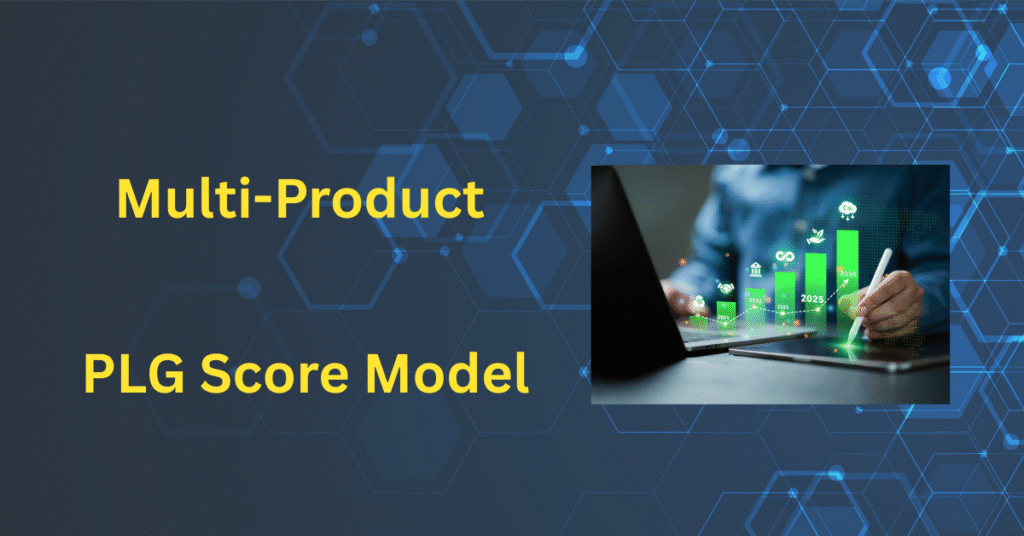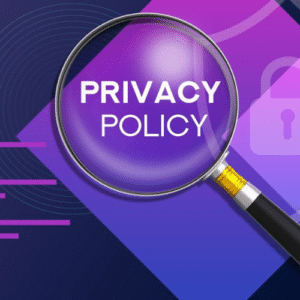
Key Takeaways
- Score the journey: sequence, synergy, stickiness.
- Add team signals and integrations to see intent.
- Keep it explainable—show what moved the score.
- Set thresholds → trigger plays you’ll actually run.
- Start small, measure lift, and tune monthly.
Your portfolio spans multiple products, and revenue depends on how customers stitch them into daily workflows. A multi-product PLG score turns scattered signals into a PLG scoring model operators can act on. Teams often track an account health score and run Eloqua and Marketo lead scoring, yet expansion is driven by cross-product usage and collaboration—the patterns that convert activity into timed, targeted actions.
What is the multi-product PLG score?
A composite built from how customers move across products and work as a team. Core inputs:
- Adoption sequences (what starts the journey, what consistently follows)
- Feature synergy (pairs/clusters used in the same window)
- Stickiness across tools (repeat multi-product use vs one-offs)
- Integration depth (CRM/chat/analytics connections)
- Collaboration intensity (creators, shared assets, workspace growth)
Why use a PLG scoring model for this?
Point rules on single features flatten behavior and miss timing. A PLG scoring model that incorporates the cross-product pattern and collaboration becomes an early, defensible indicator for upsell, cross-sell, and save plays. Explainability is essential so sales and success can see which events moved the number.
How to build the score (fast path)
- Instrument the event dictionary (feature used, integration added, workspace created) with reliable user/team/product IDs.
- Select 4–6 inputs from the signals above; set light initial weights and test on a sample cohort.
- Define thresholds and actions: tiers (nurture, assisted, high-touch) with specific outreach, offers, and handoff rules.
- Enable real-time triggers for material score changes; log the reason each trigger fired.
- Explain & improve: show local drivers to field teams; use feedback to tune inputs and thresholds.
What are Best practices & governance?
- Cadence: monthly drift check, quarterly retrain with change log.
- Overrides: allow exceptions with guardrails and approvals; maintain an audit trail.
- Documentation: model card, training snapshots, validation results.
- Feedback loops: capture false positives/negatives from sales and success and fold into the next retrain.
Is marketing automation suitable? It depends.
Marketing automation can absolutely accept product events and power scoring-driven programs—but suitability depends on latency, volume, identity complexity, and model type.
- Use MA alone when you have a small set of high-value events, near-real-time to daily latency, rules-based logic, and person-level updates that roll up cleanly.
- Supplement MA (warehouse/CDP + scoring service) when you need sequence-aware or graph-aware scoring across multiple products, robust account-level rollups, heavier event volumes, or sub-minute reactions. Compute externally; write the score back for orchestration.
Can I push in-app product usage to Marketo/Eloqua for scoring?
Yes. Define a compact event dictionary, stream to your CDP or warehouse, normalize IDs, and sync scoring fields into the systems of action. Smart Campaigns/Program Canvas can react immediately. Teams typically map usage into Marketo lead scoring for behavioral adjustments and Eloqua lead scoring for structured engagement inputs, qualify into lifecycle stages, and alert sales. Start with a handful of high-value events and a closed-loop report to verify lift.
Future-ready extensions
- Market-aware adjustments for pricing or competitor moves
- Cold-start aids (transfer learning) for new products
- Coverage expansion to include partner usage and marketplace add-ons
Conclusion & next steps
Growth depends on seeing the whole pattern—how products and people come together, in what order, and with what staying power. A multi-product PLG score embedded in a PLG scoring model gives you an actionable signal instead of a noisy dashboard. Put it to work by auditing events, defining a lean schema, wiring thresholds to concrete plays, and enabling real-time triggers with explanations so every move is timely and defensible. Keep the account health score current for executive roll-ups, and align lifecycle programs with Eloqua and Marketo scoring so marketing automation and field execution move in lockstep.
If you want a fast start, 4Thought Marketing can lead a focused sprint to map your product graph, finalize inputs and thresholds, pilot on a controlled segment, and return a model card plus playbooks ready to deploy.
Frequently Asked Question (FAQs)
What is a multi-product PLG score?
A multi-product PLG score combines signals from how customers move across products and collaborate as a team. Core inputs include adoption sequences, feature synergy, stickiness across tools, integration depth, and collaboration intensity.
Why use a PLG scoring model?
A PLG scoring model turns cross-product behavior and collaboration into a single, defensible signal for prioritization. It supports tier thresholds and playbooks while keeping explanations visible to sales and customer success.
How does an account health score relate to a PLG scoring model?
An account health score provides an executive-friendly roll-up of retention and expansion risk, while a PLG scoring model focuses operationally on cross-product behavior and collaboration to trigger specific actions.
Can I push in-app product usage to Marketo/Eloqua for scoring?
Yes. Define a compact event dictionary, stream events to your CDP or warehouse, normalize IDs, and sync fields into systems of action. Teams commonly map product usage into Marketo lead scoring for behavioral adjustments and Eloqua lead scoring for structured engagement inputs.
Is marketing automation suitable for PLG scoring?
It depends on latency, volume, identity complexity, and model type. Marketing automation can ingest key product events and support rules-based scoring; when you need sequence-aware or graph-aware scoring at account level and lower latency, compute externally and write the score back for orchestration.











